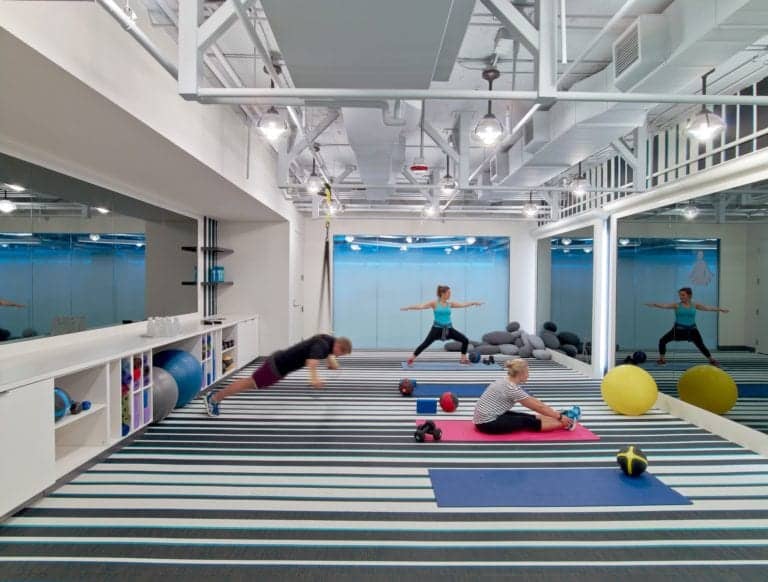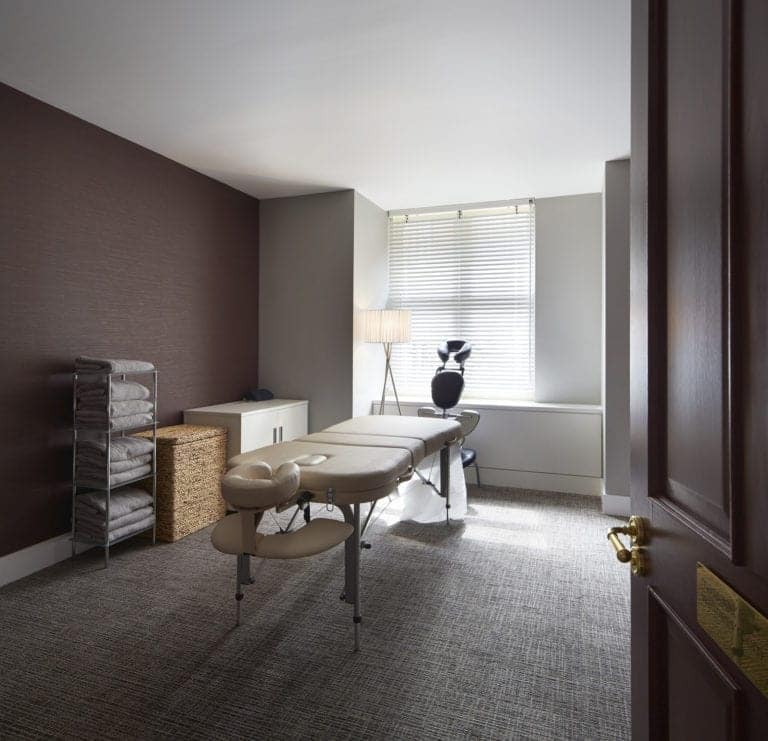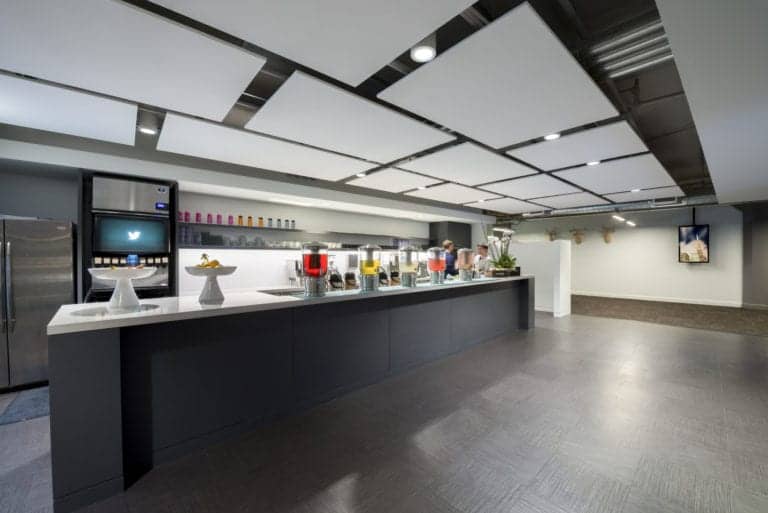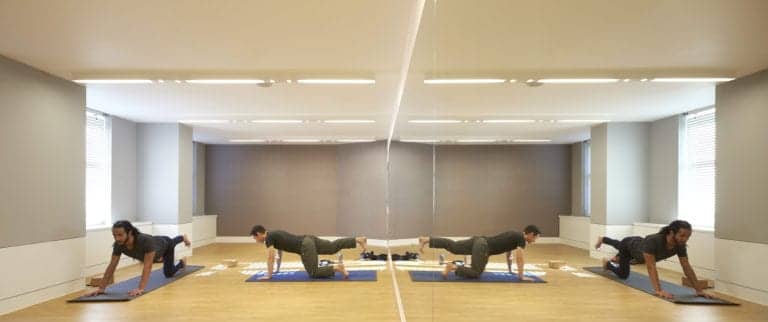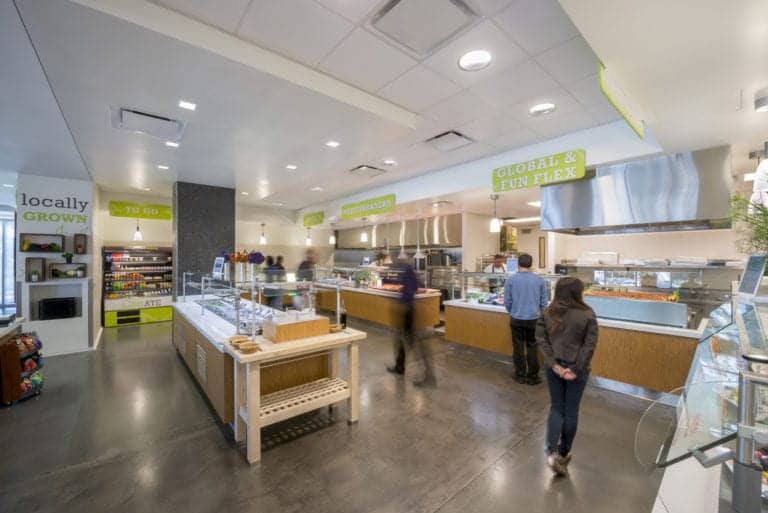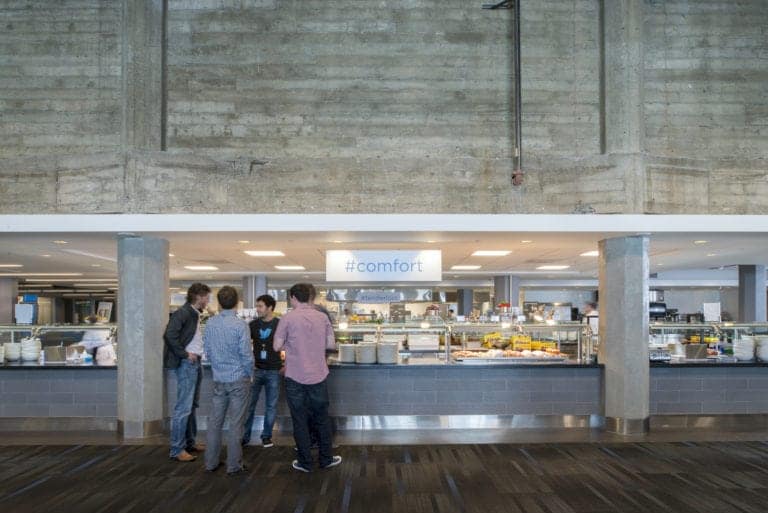More...
By Diane Rogers, AIA, IIDA, LEED ID+C | Senior Project Architect | March 14, 2017
A VARIETY OF OPTIONS, BOTH OUTSIDE THE BOX AND MAINSTREAM, OFFER CHOICES FOR WORKPLACE WELLNESS.
Well networked and armed with multiple devices, today’s professional is always connected but admittedly stressed, as the hazy line between personal and professional life continues to fade and the pressures of each impinge on the other. But research confirms that a work environment focused on wellness, with real opportunities for engagement and wellbeing, can make a difference to mitigate stress, improve health, focus attention, and increase productivity.
Mindfulness as a practice was outside the box when first introduced to the General Mills workforce in 2006. But it delivered positive results, and some of the nation’s most successful companies quickly took the cue—Google in 2007, Aetna in 2010, Intel in 2012. Include Ford, Goldman Sachs, Adobe, Target, Davos, and countless other successful organizations in the mix. But what are some of the options both outside the box and mainstream that firms might consider to nurture wellness in 2017?
For those work environments with lockers, showers, and a generous budget, sauna rooms could be a welcomed addition, better yet infrared saunas, now trending in wellness hubs from New York to Los Angeles. Cooler than traditional saunas that heat the surrounding air, infrared saunas heat from the inside, raising core body temperatures to as high as 150 degrees, with the same type of heat waves used in hospitals for rehabilitation therapy. The infrared heat works for people of all fitness levels to soothe muscles and joints, powerfully detoxify, and effect deep relaxation.
If mindfulness—presence in the moment—is both calming and freeing, then multi-sensory environment immersion (MES), delivered in an intentionally designed and dedicated space with controlled sensory input, might be just the thing to help staff refresh and rewind. MES combines light, sound, scent, and relaxation with inner reflection and is quickly growing in popularity. Cupping, hot stone message, Reiki, and of course, yoga, are other body-mind practices that could benefit and promote a more resilient workforce.
For lasting health improvements, incentivizing staff to adopt healthy behaviors should be a fundamental goal. Building a culture for wellness that develops autonomous and personalized habits geared to wellbeing might include the distribution of wearables to keep staff mindful, inspired, and on track..
A focus on healthy eating with an availability of choices identified by their benefits—anti-inflammatory, low calorie, low cholesterol, low sodium, gluten free— would be another helpful amenity, particularly relevant in large companies that provide cafes and cafeterias with in-house prepared . On a smaller scale, juice bars are an option almost any workplace could offer.
Comfort comes in many forms and is an important factor in any work environment. Sometimes it is a matter of personal choice. For mobile workers now returning to the office, shedding those comfortable clothes for a more professional look can be challenging. But lifestyle brands like Kit and Ace, Betabrand, and ADAY are designing an entirely new category of clothing for the workforce: office-appropriate business attire based on the same technology as their fitness lines (washable, thermo-regulating, wrinkle releasing, etc.) that can easily transition from the office to after five.
Community service is another option for building a healthy workplace. Not surprising, research shows that giving back to the community yields positive results for wellness, and the scope of projects can be scaled to accommodate the size and resources of any workforce.
Providing choices that empower staff with opportunities to mitigate stress and modify personal behavior in pursuit of wellness builds a resilient workforce and work environment, offering options for autonomy that benefit both employee and employer.
Like What You See?
Learn more about the ways in which wellness is changing. Click below to read "Wellness in 2018: Community and Inclusion Drive Well-Being."
A variety of options, both outside the box and mainstream, offer choices for workplace wellness.

